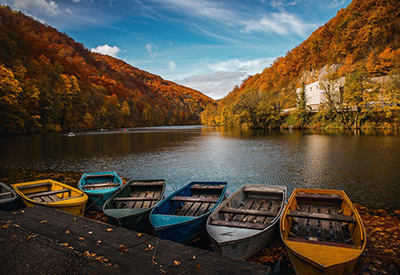*(Lyric from Leonard Cohen “Anthem”, The Future, Columbia, 1992.)
Or why I’m still hopeful despite the trucker convoy.

In this blog piece, Susan Belyea, Ban Righ Director, reflects on the ideas and changes needed to build a more inclusive and equitable society.
In March 2020 the World Health Organization declared Covid 19 a global pandemic. Here we are in 2022, having weathered two full years of uncertainty, anxiety, and loss.
Early in the pandemic some said, “We’re all in the same boat”. It quickly became apparent that while we may all be weathering the same storm, we are by no means in the same boat. Globally Covid 19 has had wildly different impacts, and global vaccine equity continues to be grossly unresolved.
In Canada the pandemic hit some harder than others too. To extend the “same storm; different boat” metaphor, some people – mostly white, mostly rich – experience Covid from a fully equipped yacht – working from home, having everything delivered, with a new pandemic pet at their side. While others -, mostly BIPOC, precariously or un-employed – continue to be battered about in a leaky dingy, unable to avoid exposure to the virus at work, on public transit, or at home, and at the same time, bearing more of the burden of caregiving to the very young, the very old, and the very sick.
None of this is news or particularly surprising. But let’s return to some of the conversations that were happening earlier in the pandemic. Amid all the reporting about the virus, some hopeful threads emerged.
Here are just a few of the many things that gave me a reason to be optimistic back in the spring and summer of 2020:
- As people experienced job loss and turned to government assistance through CERB, conversations about a guaranteed basic income were reinvigorated.
- As we relied on public health units to guide our everyday actions we recognized the role of the state in our lives, questioning the logic of leaving everything to the private sector.
- As concerts were cancelled and theatres went dark, we realized that the arts are, in fact, essential, as was so eloquently depicted in the TV adaptation of the post-apocalyptic novel Station Eleven.
- We asked, “what do we want our communities to look like when this is over” and those of us who could, spent our money in local bookstores, grocers, farmers markets and bakers.
- Rapidly growing and visible homelessness gave rise to new and expanded networks of solidarity and on-the-ground mutual aid.
It seems that we need a good shaking up – cracks in the every-day “normal” – to see what needs changing and how we might do it. A trope in post-apocalyptic fiction (which I happen to love) is that after disaster wipes out most of humanity, society devolves into tribalism and violence. At the same time, though, a small group of people seize the moment to build towards a more just, inclusive, equitable society.
So, I guess that’s where we are now. Now as we are racing back to “normal”, I truly hope that at least some of these ideas are sticky enough for us to take them up and move forward.
There’s no end of work to be done; it’s time to roll up our sleeves and get to work building a better normal.